Arrival & Han Tang Hostel
I arrived in
Xian and found my hostel pickup with a bit of trouble: it's a huge station and thousands of people can be counted on to arrive at any given time, so it took a couple of minutes to find the person sent to meet me. This really isn't a service you expect from a bargain hostel, anyway, but it was a surprising touch. What was even more surprising—shocking even—was that the rooms in this new hostel, the
Han Tang Hostel, were about as good and thoughtfully designed as you would expect from a German or Austrian hostel: sturdy and creak-free wooden beds; individual reading lights and electrical outlets for each bunk; large lockers; separate toilet, shower, and sink cubicles in each room (and beautifully designed bathrooms); and rooms that seemed designed to hold four bunks, instead of bunks being haphazardly jammed into rooms too small for them. All this, for the bargain price of 30 yuan, which represented the high value of all the hostels I stayed at in China.
On the other hand, they try to make their money back with overpriced food and tours. The staff are overworked, and while they may try to be helpful, they really don't know much and can't offer advice other than the tours they are taught to sell (and they don't even know too much about them, as they couldn't answer some questions I had about their Three Gorges cruises). They don't know how to get to local places by local bus, and don't know where bus stations are. If you want a tour or want some food, they'll be able to help you, though. The "common area" on the ground floor functions mainly as a cafe, and not as a place for travelers to gather and relax, even though it's the only place you can get wi-fi. If you are comfortable with a hostel as primarily a place to sleep, as I am, it's a great place to base yourself, especially since there's no shortage of online information about Xian.
Xian: the eastern terminus of the Silk Road
I'm already two months into my trip now, but it's only in Xian that I'm really starting the raison d'etre of this trip: to see the Silk Road. Then, as now, Xian was really the introduction to what we popularly think of as big, bustling, populated China—
China proper. West of Xian the country is drier and less populated, less prosperous, and more difficult. Mountains rise up and make travel difficult, with Gansu province's
Hexi Corridor being the main conduit of travel, sandwiched as it is between the Tibetan plateau and the Gobi desert. The Hexi Corridor's western terminus ends in Xinjiang and the Taklamakan desert, where the Silk Road splits into two: the northern route goes north around the desert while the southern route goes along the southern route, below the Tibetan plateau. The northern and southern routes join up again at the western edge of the desert, in Kashgar, and then split up again to take various paths through the Central Asian mountain ranges.
Despite being the eastern terminus of the route, Xian remains decidedly Chinese in feel, with fairly scant evidence (aside from its wealth) of western influence. Although it has a noteworthy Muslim quarter, the Muslims are Hui and number only about 50,000.
Xian is where I really got tired of paying to see things. Attractions are quite expensive in China, with cheap sites being 25 yuan, mid-range being 60 yuan, and expensive attractions being 150 yuan or more. In comparison, most temples in Japan (a much more expensive country) were 500 yen, or about 30 yuan. Also keep in mind that my hostel in Xian was 30 yuan per night, and that 150 yuan was basically my daily budget for everything, including long-distance transportation.
If these are expensive for me, they're also expensive for Chinese. Or, expensive for average Chinese. For the most part, though, Chinese who can afford to travel can afford to pay a lot. When you have Chinese investors buying real estate in Manhattan, you begin to understand that if even only 1% of Chinese can afford to travel, that still makes 14 million affluent travelers. China can basically price their attractions at almost any level and still have enough domestic demand, and the somewhat perverse result is that Western prices (or more) are charged for attractions that fall to standards well below what we would expect in the West.
 |
| The Bell Tower is surrounded by a traffic circle and is accessed by underground tunnels. The 27 yuan entrance fee ensured I didn't go in. |
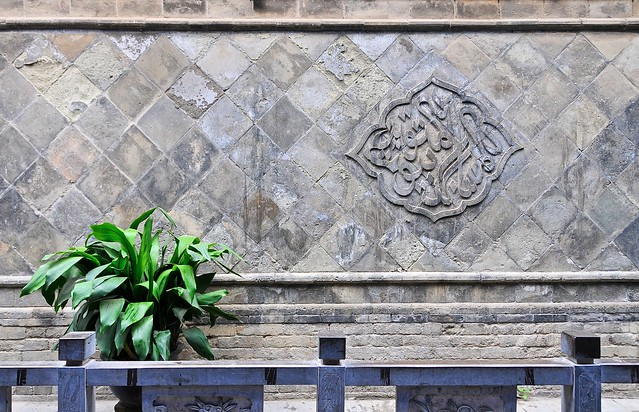 |
| Arabic detail at the Great Mosque. Entry is 25 yuan so I skipped it, too. This is perhaps the one sight I skipped that might have been worth it, even if the Hohhot mosque was similar (but much smaller). |
 |
| You can buy unpainted ceramics at this park and then paint them and have them fired at this park. Chinese dote on their children—not least because they can only have one—so you'll always see parents and children spending time together. |
 |
| Hat on post at a mosque. |
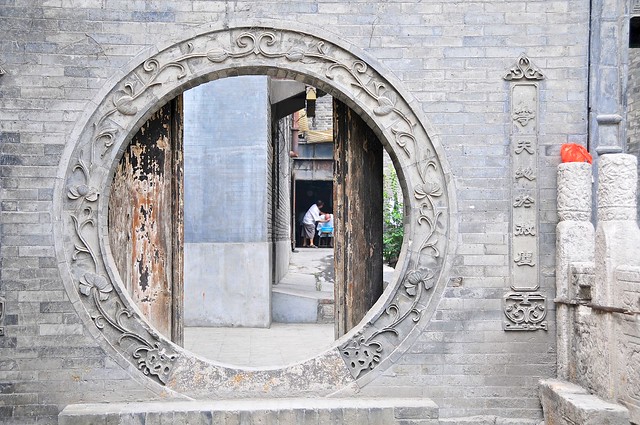 |
| An old entrance way. |
 |
| Entrance to the city wall. Admission is 54 yuan, so I skipped it. |
 |
| South gate of the city wall. |
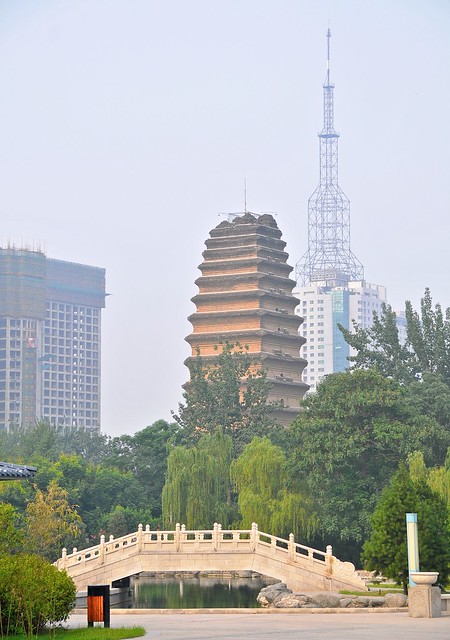 |
| Little Wild Goose Pagoda, from the park around Xian Museum. The museum was already closed, so I headed to the Large Wild Goose Pagoda. |
Big Wild Goose Pagoda
The Big Wild Goose Pagoda is a couple of km south of the city walls, but is surrounded by pleasant parks and is a nice place to visit and see the locals, especially in the evening when they congregate to socialize. Since it's 50 yuan to enter the complex and another 40 yuan to climb the pagoda, I enjoyed it from the outside. You can get there by buses 609 and 610 from the Bell Tower (bus 610 is slower since it goes to the Little Goose Pagoda first).
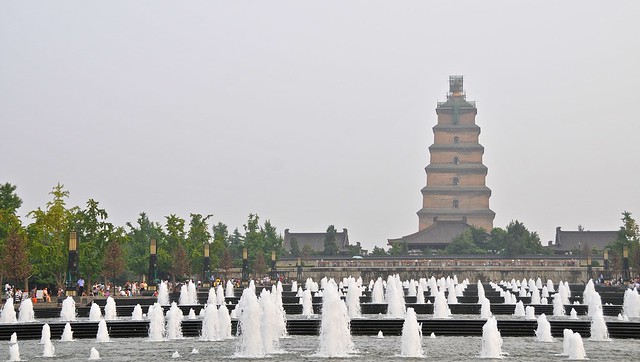 |
| The Big Wild Goose Pagoda is much more of a public park than the small one is, and has a very vibrant feeling to it. On the north side there is a set of pools with synchronized fountains. |
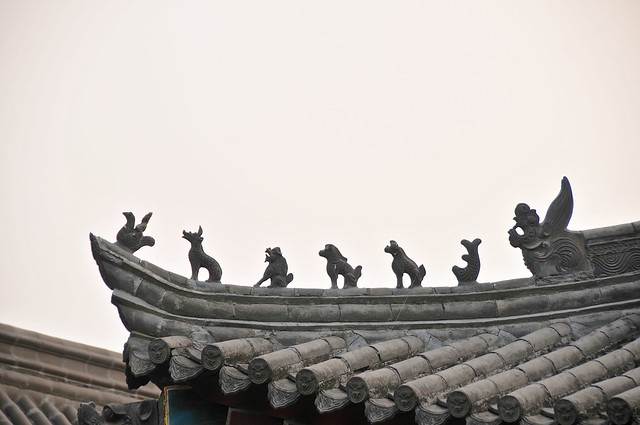 |
| Corner of a building. The animals guard against spirits. |
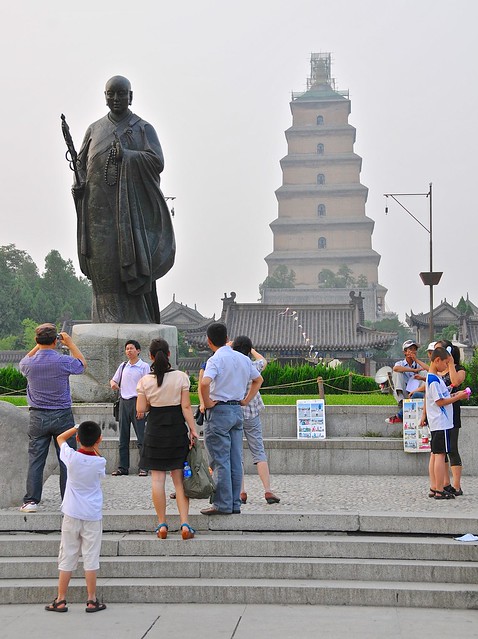 |
| On the south side is a park that was popular with younger kids, who broke out in a heavily choreographed flash-dance when I was there. |
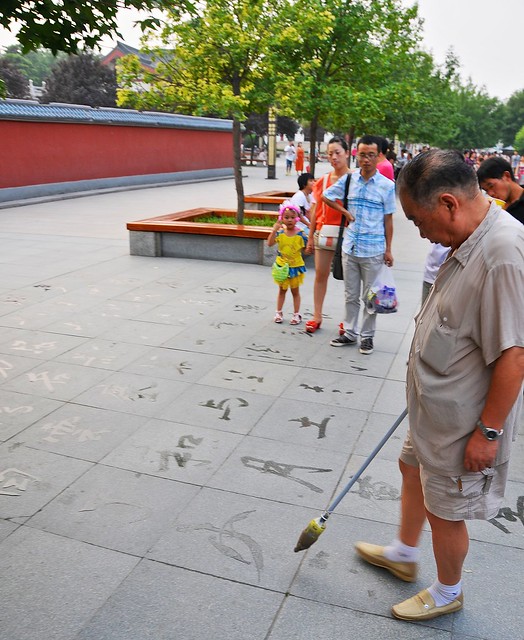 |
| Water calligraphy. I wish I knew what he was writing. |
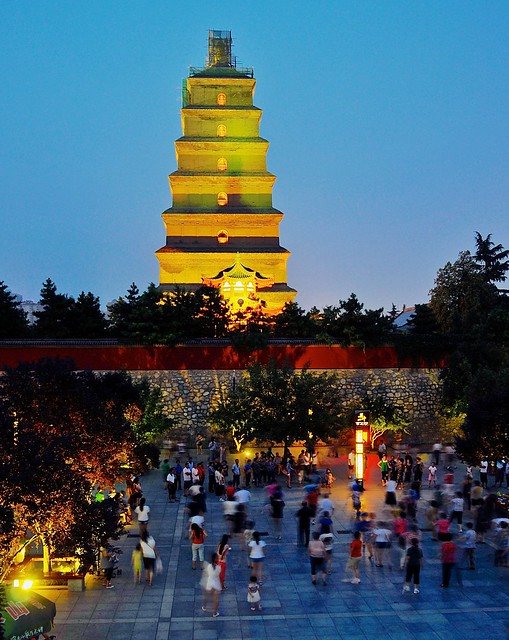 |
| Line-dance class in the plaza under the pagoda. So Chinese. |
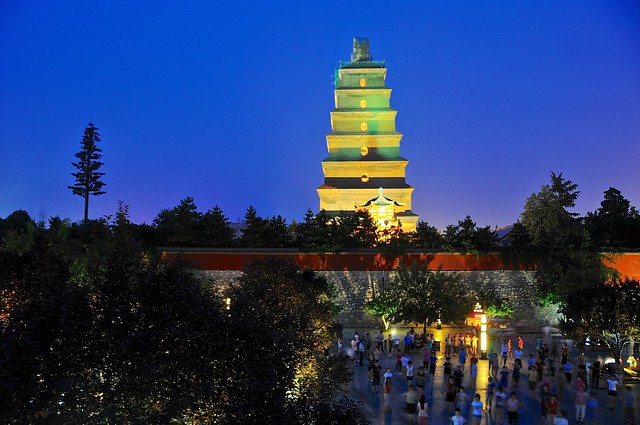 |
| People watching in Chinese parks is quite enjoyable. Lives lived in public, and all. |
Terracotta Warriors
The big attraction in Xian is, of course, the Terracotta Warriors. They are found about 20 km east of the city, and bus 306 will leave from in front of the train station to the museum (but beware of scammers and touts directing you to their own private buses).
The entrance fee is a steep 150 yuan (about $25), and they take every opportunity to separate you from even more money. You can pay another 10 yuan to take a golf-cart train up the slope from the ticket office to the entrance, and once inside there are all sorts of official opportunities to spend more money (by posing with the warriors, buying souvenirs, etc.). Communism, Chinese style: "To get rich is glorious."
 |
| In the museum, before you enter the pit buildings, you can see individual warriors up close, in glass cases. |
 |
| You can also take your picture posing next to a (replica) warrior. |
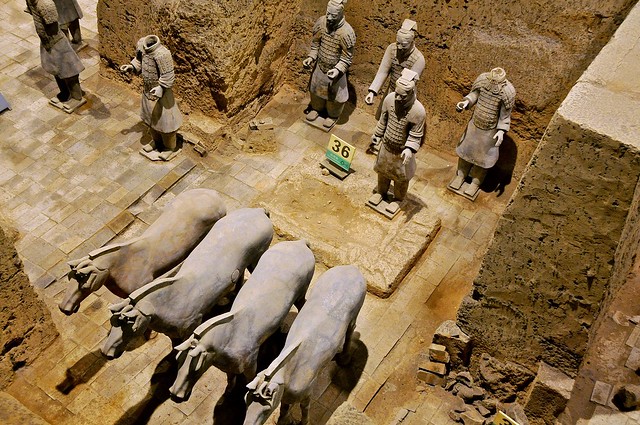 |
| Animals are much rarer than people. |
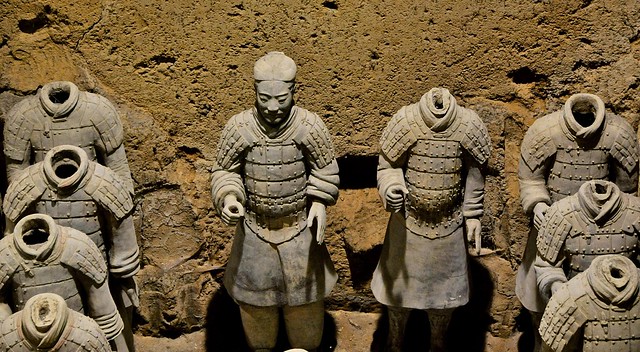 |
| Most people lack heads. |
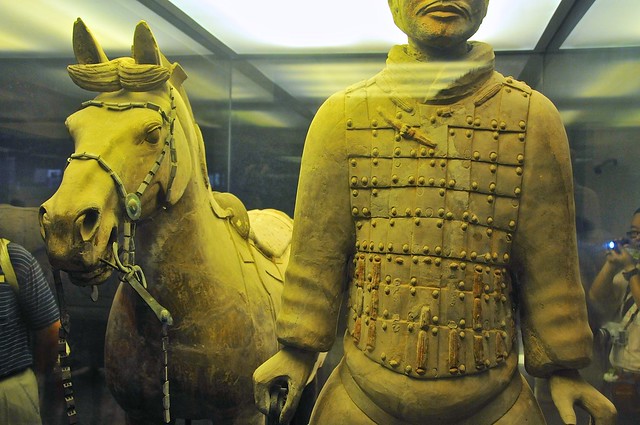 |
| There are also glass cases in the pits, displaying exceptional examples, like the horses. |
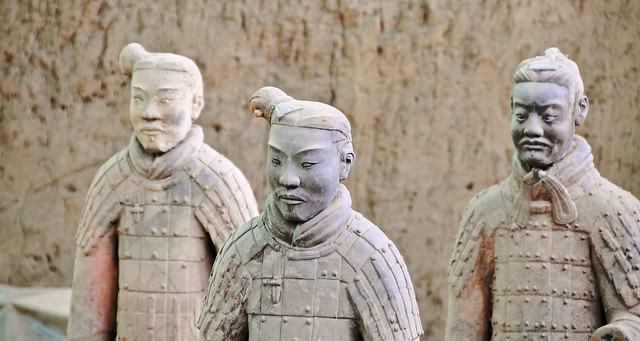 |
| The different facial features are interesting. |
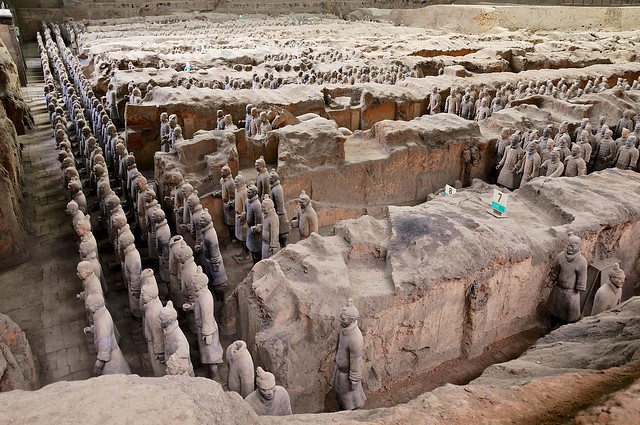 |
| The scale is impressive, but you never get close enough to appreciate them. There are about as many tourists looking at them at any moment as there are warriors being looked at. |
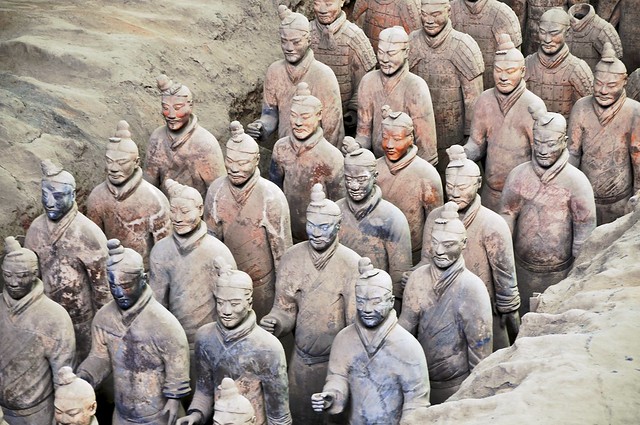 |
| I don't know why they don't add the spears or props they are intended to carry: they are restorations, after all. |
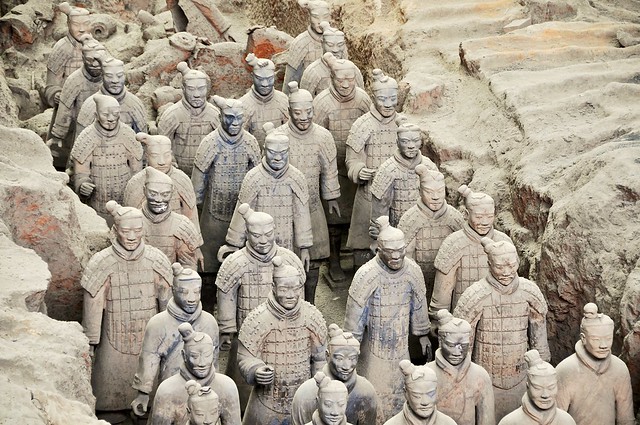 |
| All in formation. |
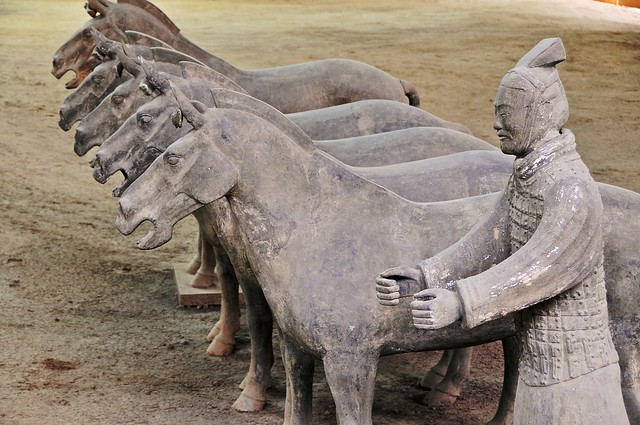 |
| Some of the rare horses, though lacking their bridles and bits. |
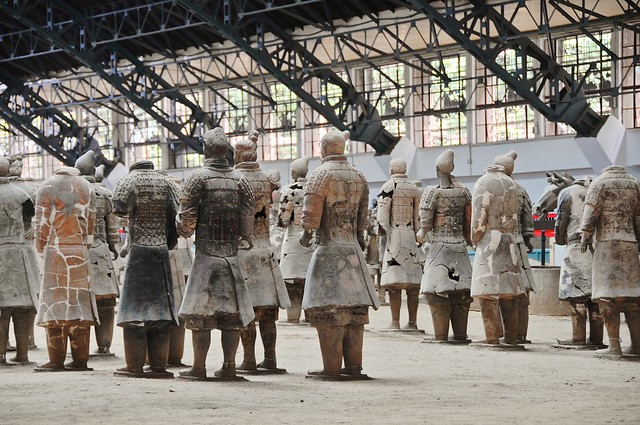 |
| This gives you a bit of the idea of the setting. |
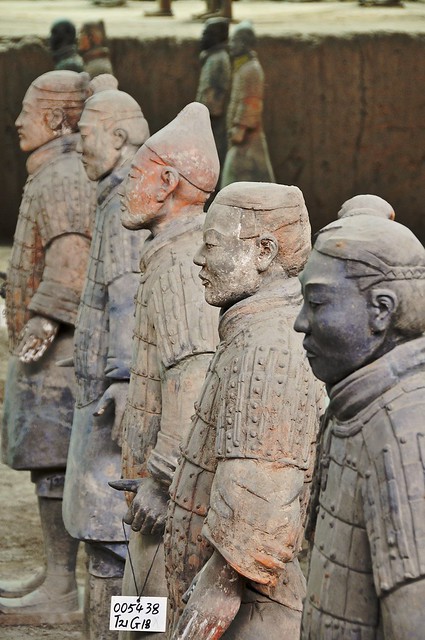 |
| Many warriors carry identification or inventory tags. |
In all honesty, the warriors were pretty disappointing, especially given the steep price of the tickets. I think that we have been exposed to these warriors so much through TV, media, magazines, and other forms of pop culture to the extent that we already have a really good idea of what they are and what they look like—except that in all of these presentations we've seen the from good angles, up close and personal. When you actually visit the site, however, you get to view some of them up close and personal in the museum, through glass boxes. The masses in the pits, however, are viewed from maybe 5 meters above, in the company of a thousand or so of your best friends, over the din of tour guides giving lectures in different languages while shepherding their flocks through at brisk paces. Hardly conducive to reflection or quiet appreciation of what you're seeing.
After I returned from the warriors I explored the Muslim quarter some more and decided my plans for the coming days. I had been tempted to make a detour to the south to Chongqing to take a Three Gorges cruise, but I also knew that if I did that I would also feel compelled to see other things in the region, like Tiger Leaping Gorge, and that this would probably result in a delay of at least 10 days—and probably more. Given that the staff at the Han Tang couldn't answer some of my questions about the cruise, I decided it would be best to instead make a real start on the Silk Road, and head to Lanzhou. I was able to buy a hard-sleeper ticket from the secondary ticket office south of the Bell Tower(which still involved a substantial wait in line) for a 5 yuan fee.
 |
| Drum Tower at night. |
Little Wild Goose Pagoda and Museum
The Little Wild Goose Pagoda and the Xian Museum are a walkable distance southwest of the south gate, located in the same compound and connected by a park. The entrance is on the west side, and you need to show your passport at the ticket office to get a free ticket to Xian Museum.
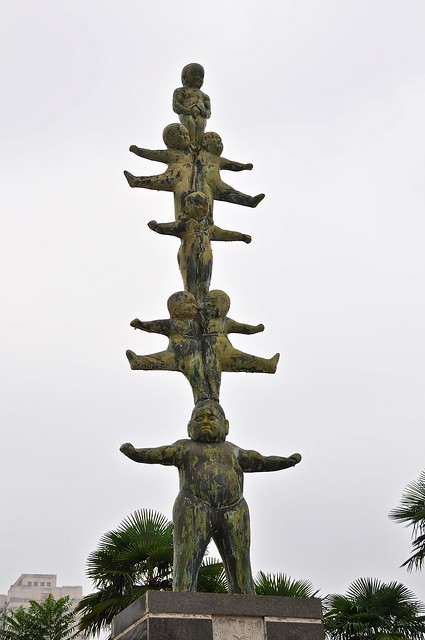 |
| Cool sculpture by the Little Wild Goose Pagoda. |
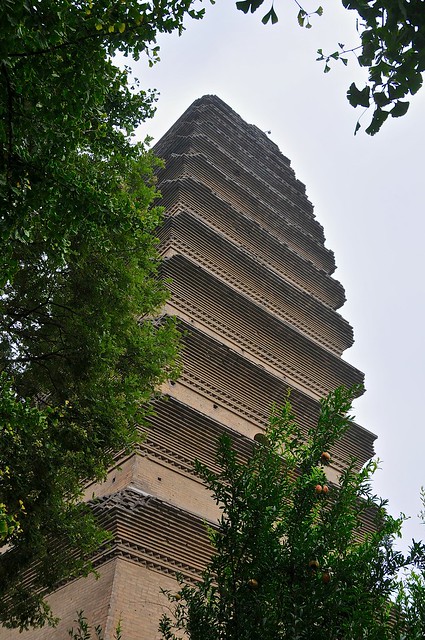 |
| Below the pagoda. |
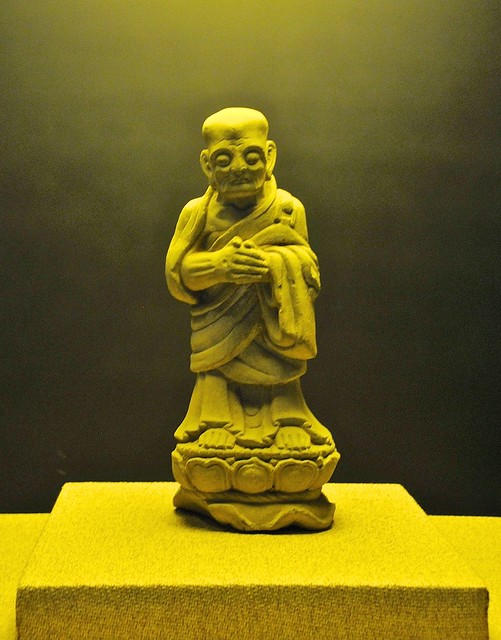 |
| Monk on a lotus, in the Xian Museum. |
 |
| Beautiful Buddhist relief. |
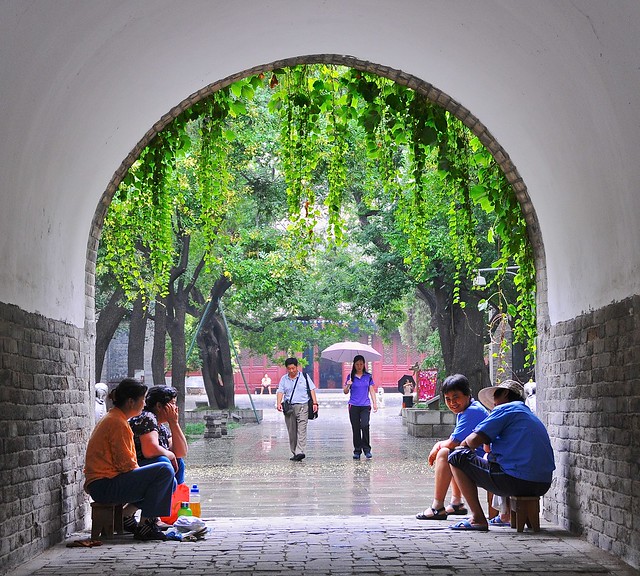 |
| It was raining when I left the museum. |
 |
| It's even more tranquil in the rain. |
 |
| There's a temple and an exhibition hall just south of the pagoda. |
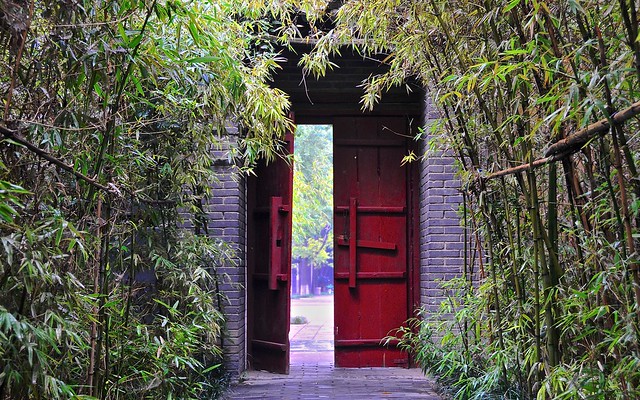 |
| Bamboo walkway leading to the pagoda's plaza. |
 |
| From the base of the Little Wild Goose Pagoda. |
 |
| The Xian Museum. It's pretty good and, like many museums, free. The propaganda value and (re-)education value may be a reason for this. All major museums tend to offer English explanations. |
 |
| In China, the building never stops. |
The city walls
On the south and western sides of the walled city, parks line the walls, and it's great to stroll around in the evening and soak up the Chinese atmosphere.
 |
| Ping pong south of the city wall. |
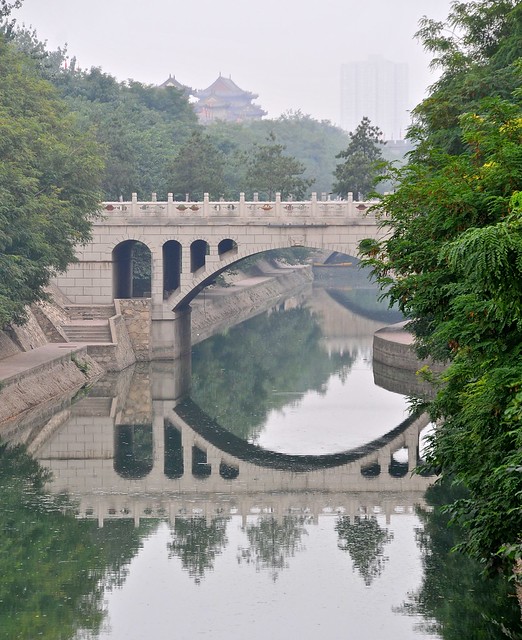 |
| Bridges over the moat, with the south gate in the background. |
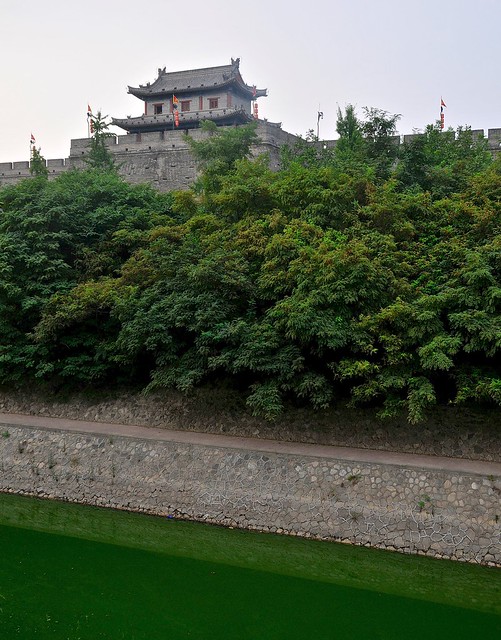 |
| A watchtower and unnaturally green water. |
|
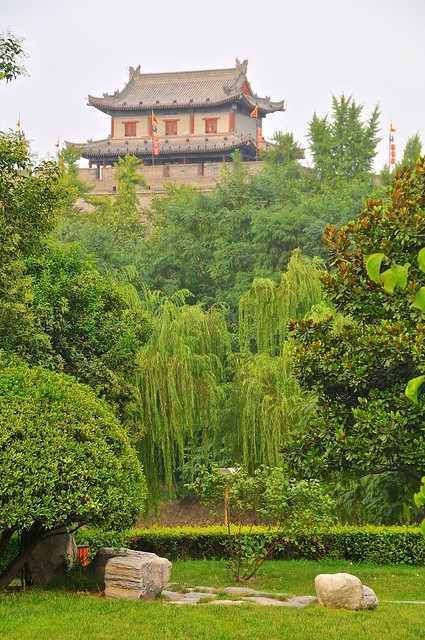 |
| A park to the west of the walls. |
 |
| The Chinese do parks very well. They spend money to make them nice, and they're well used. |
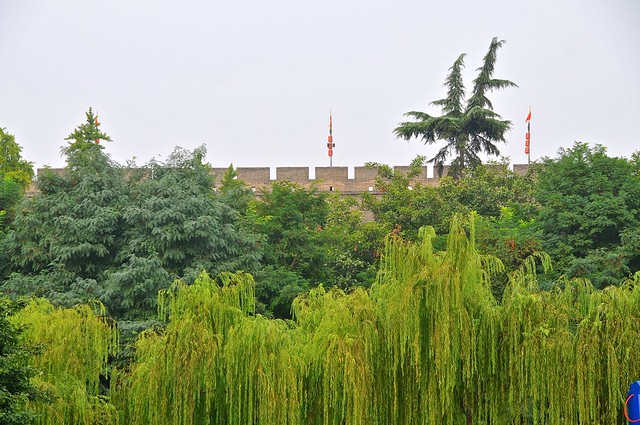 |
| The ramparts over the trees. |
 |
| Playing a version of takraw, or volleyball where only the feet and head can be used. They were using a badminton birdie instead of a rattan ball. |
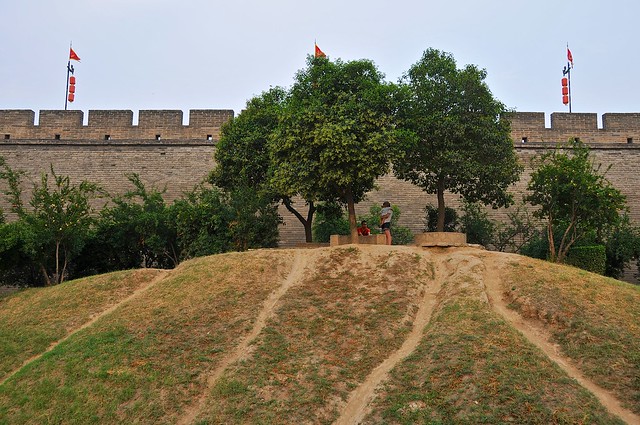 |
| A hill in the park. |
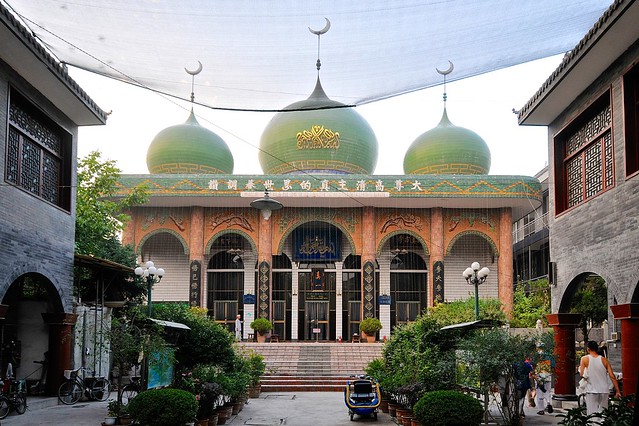 |
| Mosque in the Muslim quarter. |
I spent three full days and two nights in Xian, and this was more than enough time to see everything at a relaxed pace. Two full days would be ample—especially in the summer when the days are longer—and I would have considered only staying two days had I not booked for two days when I checked in. The Terracotta Warriors will take half a day, but that is really the only must-see sight in town. Places like the Muslim quarter and the Big Wild Goose Pagoda can be seen in the evenings, and even if you go to see most of the sights in the city you should have enough time to do everything in two days. It might be worth adding another day and climbing
Huashan Mountain, though this is pretty expensive (180 yuan admittance fee + transportation costs) and likely crowded.















































No comments:
Post a Comment